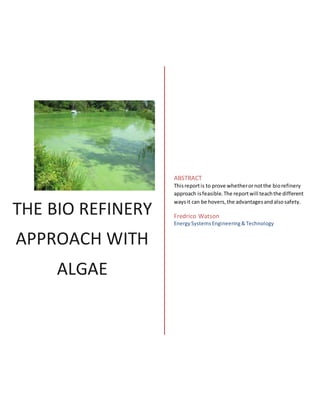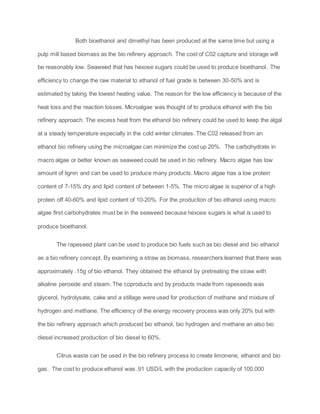A bio refinery is a facility that converts biomass into multiple fuels, power, chemicals, and products. This report evaluates the feasibility of a bio refinery approach using algae. It discusses using algae grown in wastewater to produce electricity, biodiesel, biogas, and bioethanol. The bio refinery concept aims to reduce water usage, lower costs by using waste resources like CO2 and wastewater, and produce multiple revenue streams from algal biomass. While high upfront costs and concerns over algal toxins remain challenges, the report finds the bio refinery approach could provide sustainable fuel production and wastewater treatment.














